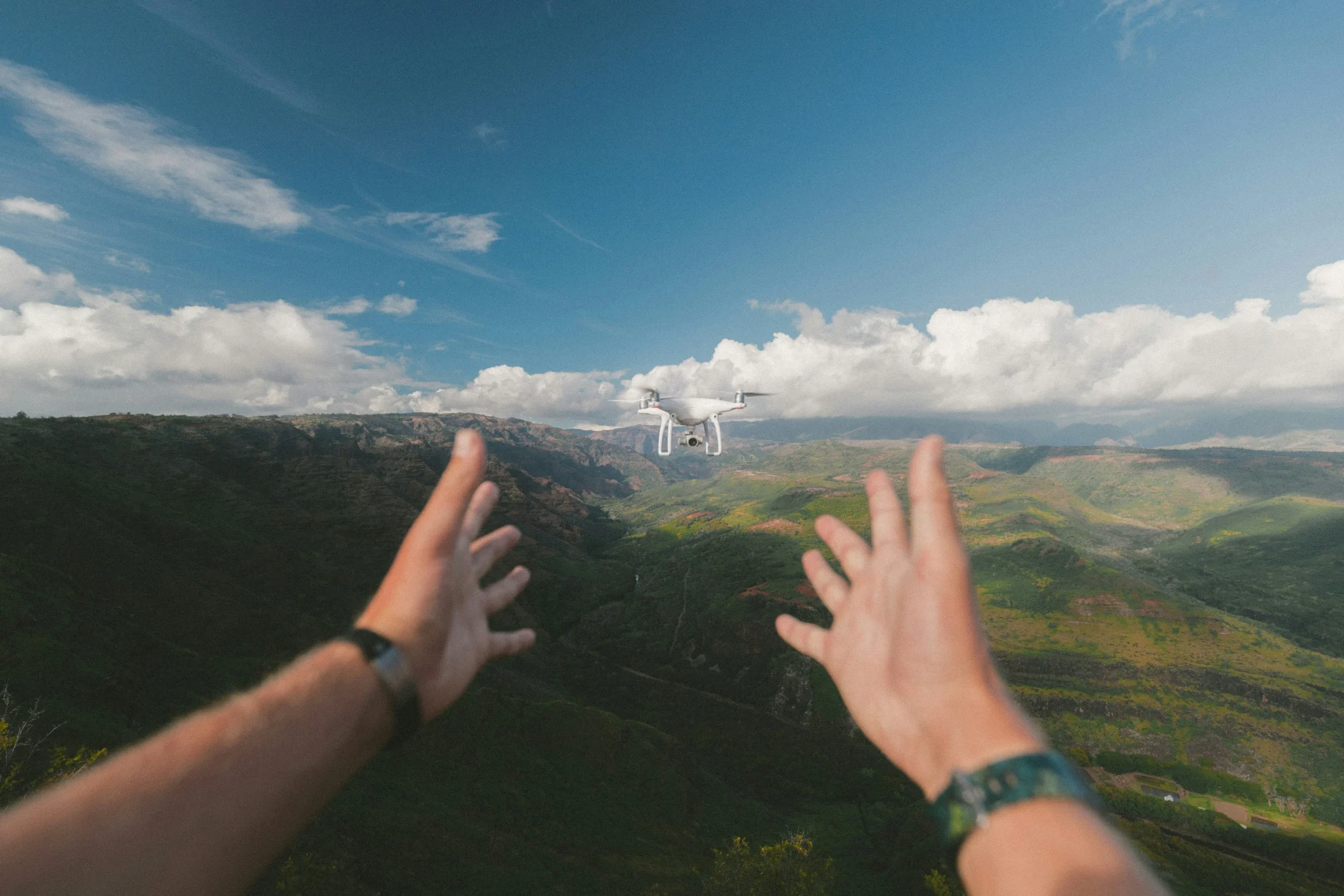Drones, the new frontier for companies

What can drones be used for?
Drones, or UAVs ( Unmanned Aerial Vehicles), are aircraft piloted remotely or autonomously without the presence of a pilot on board. In recent years, drones have attracted considerable interest in a wide range of sectors due to their versatility and multiple uses. Below, we will explore some of the main uses of drones:
- Aerial Photography and Videography: One of the first and most common uses of drones is aerial photography and videography. Drones are equipped with high-quality cameras that allow them to capture images and videos from unique and spectacular perspectives, which would otherwise be difficult or impossible to obtain with traditional methods.
- Monitoring and Inspections: Drones are widely used to monitor and inspect infrastructure, such as power lines, oil pipelines, bridges, buildings and land. Their ability to fly at high altitudes and access hard-to-reach places makes drones ideal for identifying damage, anomalies or safety problems.
- Precision Agriculture: In the field of agriculture, drones are used to fly over crops in order to collect data on the state of plants, the distribution of water and nutrients, and the presence of diseases or parasites. This data can then be used to optimize agricultural practices and maximize crop yields, while reducing the use of resources such as water and fertilizers.
- Surveillance and Security: Drones are used for security and surveillance purposes in a variety of contexts, including public events, national borders, areas of military interest and sensitive industrial sites. Their ability to fly in the air for long periods and cover large areas makes them valuable tools for surveillance and monitoring suspicious activity.
- Emergencies and Rescue: During emergency situations, such as natural disasters or accidents, drones can be used for search and rescue, allowing rescue teams to quickly locate and reach victims. Drones can also be used to deliver emergency supplies, such as medicines or medical equipment, to hard-to-reach areas.
- Deliveries and Logistics: An emerging application of drones is in deliveries and logistics. Some companies are exploring the use of drones to deliver light packages and goods in urban and remote areas, offering a fast and efficient solution for transporting goods.
These are just a few examples of the many uses of drones in different sectors. As technology continues to develop and regulations evolve, we are likely to see further innovation and applications of drones in the future.
Water in the desert
Unique experiments involving the use of drones to induce rain have been conducted in Dubai, one of the most cutting-edge cities in the world in terms of technology and innovation. This practice, known as “cloud seeding”, was implemented with the aim of increasing rainfall and addressing the constant challenge of water in a region characterized by an arid, desert climate.
During May and July last year, Dubai conducted its first artificial rain tests using specially designed drones. These drones flew over the moisture-laden clouds and released chemical materials or salts into them. These materials act as “condensation nuclei”, helping water droplets in clouds to come together and form rain.
The goal of these experiments is to increase rainfall and ensure greater availability of water for irrigation, agriculture and human consumption. In a region where water resources are limited and desertification is a constant threat, the ability to control rainfall through the use of drones could have a significant impact on environmental sustainability and population well-being.
Flying deliveries
Amazon, one of the largest and most influential e-commerce companies in the world, has started several projects and experiments regarding the use of drones for parcel delivery, in order to make the process of distributing goods to customers more efficient and faster.
Some key initiatives Amazon has started or is currently exploring:
- Amazon Prime Air: Amazon launched the “Amazon Prime Air” program with the aim of delivering packages using autonomous drones. The project involves the delivery of packages within a radius of a few kilometers from distribution centers, enabling faster deliveries and reducing transportation costs.
- Drone delivery trials: Amazon has conducted several drone delivery trials in various parts of the world. These trials involve the use of drones to deliver packages to remote or difficult-to-access areas, as well as to test the feasibility of delivery in densely populated urban environments.
- Safety and navigation technology: Amazon is investing in the research and development of advanced technologies to ensure the safety and efficiency of drone delivery operations. This includes autonomous navigation systems, obstacle detection sensors and technologies for monitoring and controlling drones in flight.
- Integration with existing logistics: Amazon is exploring ways to integrate drone delivery operations into its existing logistics network, allowing it to coordinate deliveries with other transportation methods, such as ground vehicles and cargo planes.
Amazon’s goal is to leverage drone technology to improve customer experiences by reducing delivery times and offering greater flexibility in delivery options. While there are still challenges to address, such as regulations and safety issues, Amazon is committed to continuing to develop and implement innovative solutions for package delivery using drones.
These are just some of the innovations born thanks to this technological innovation which, although it is in the development phase, is bringing about great changes in the tech world and the world economy.




